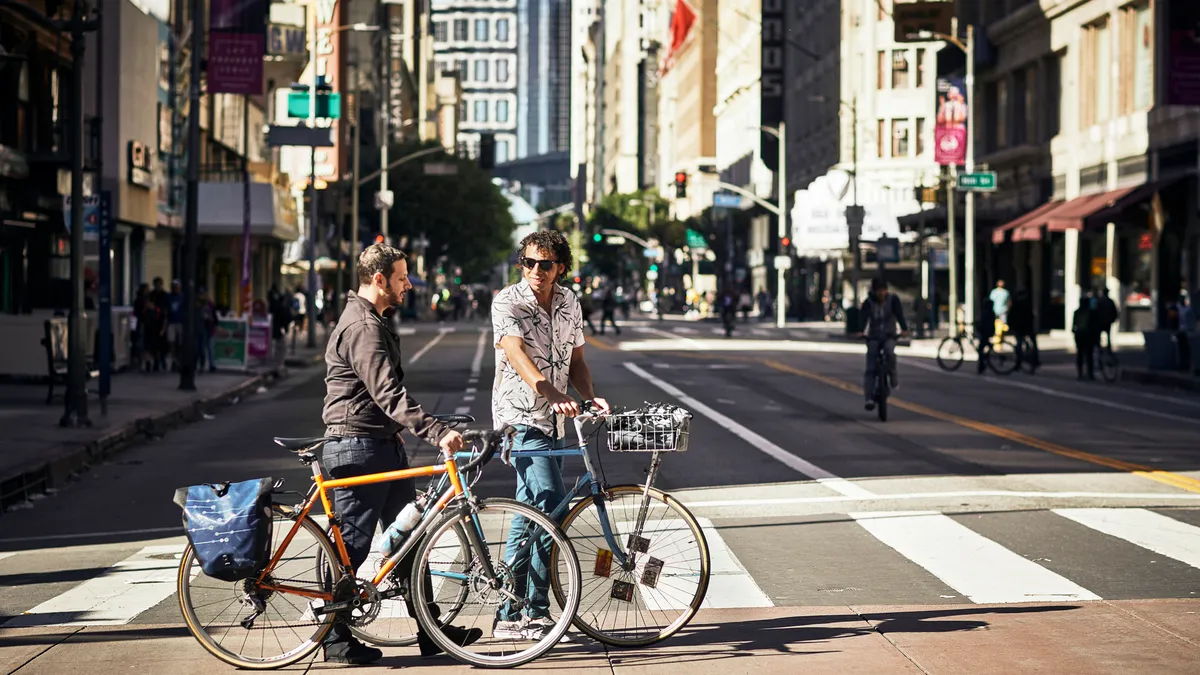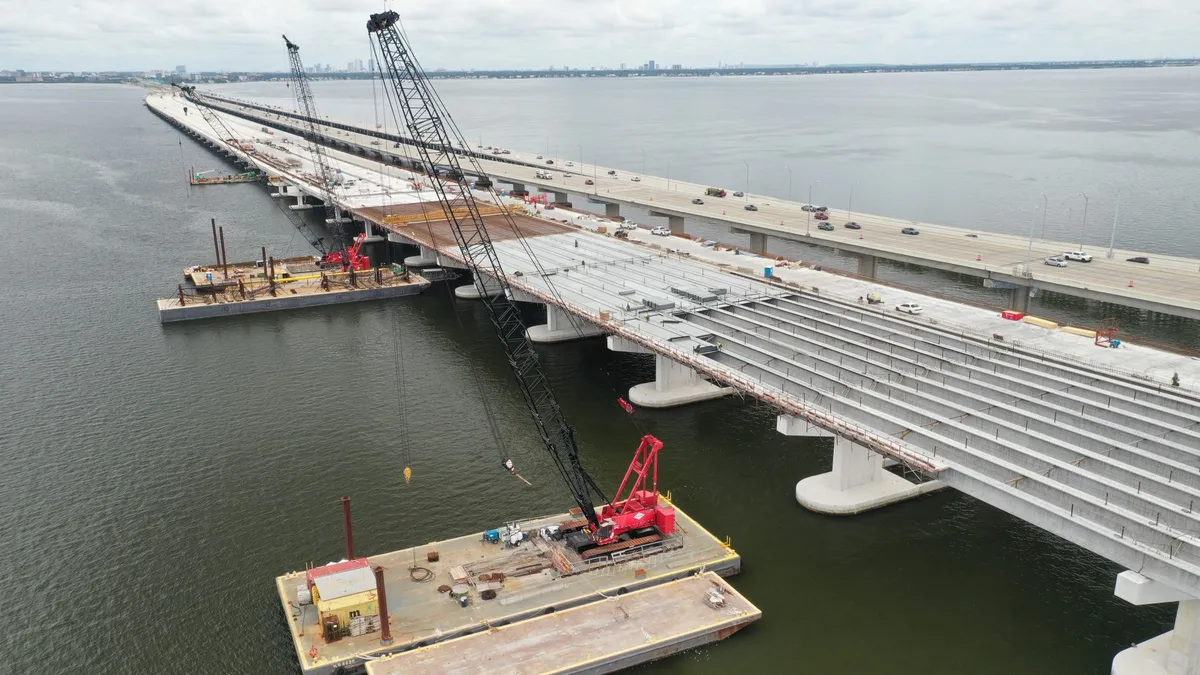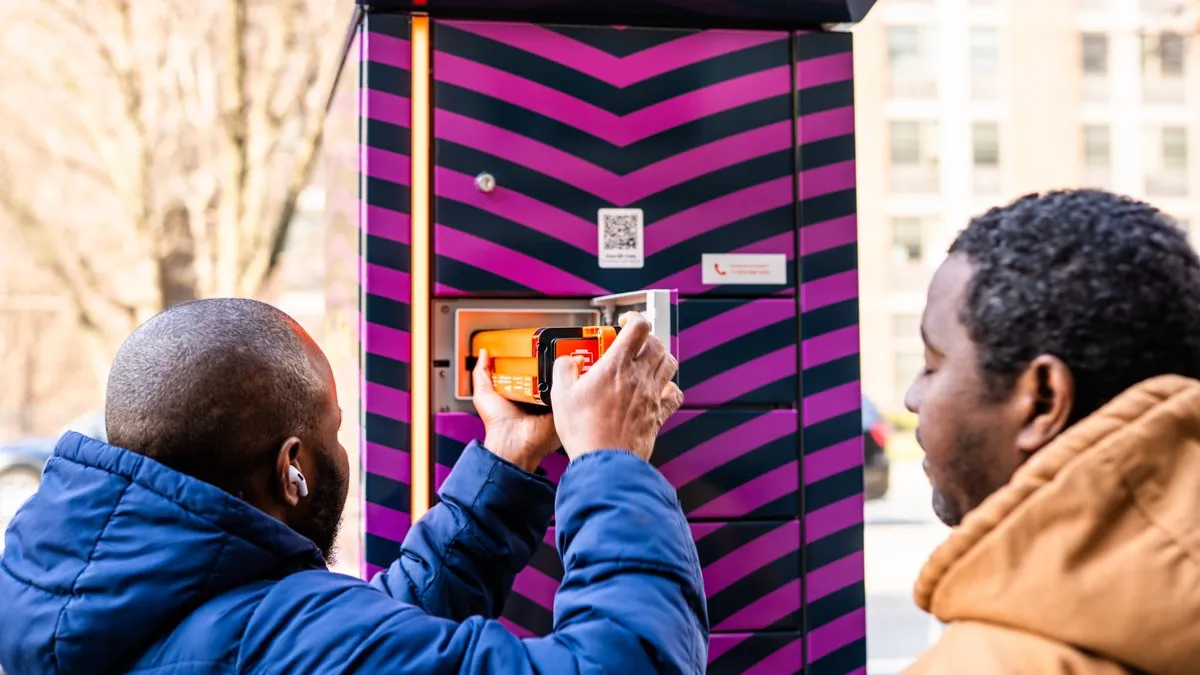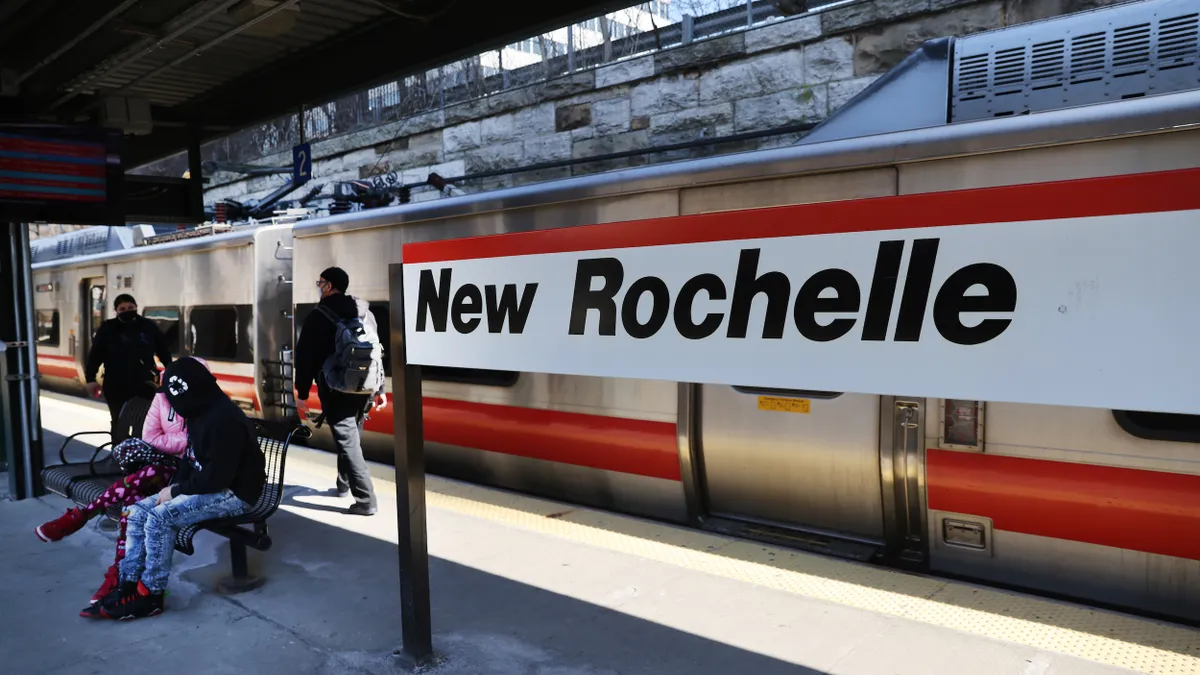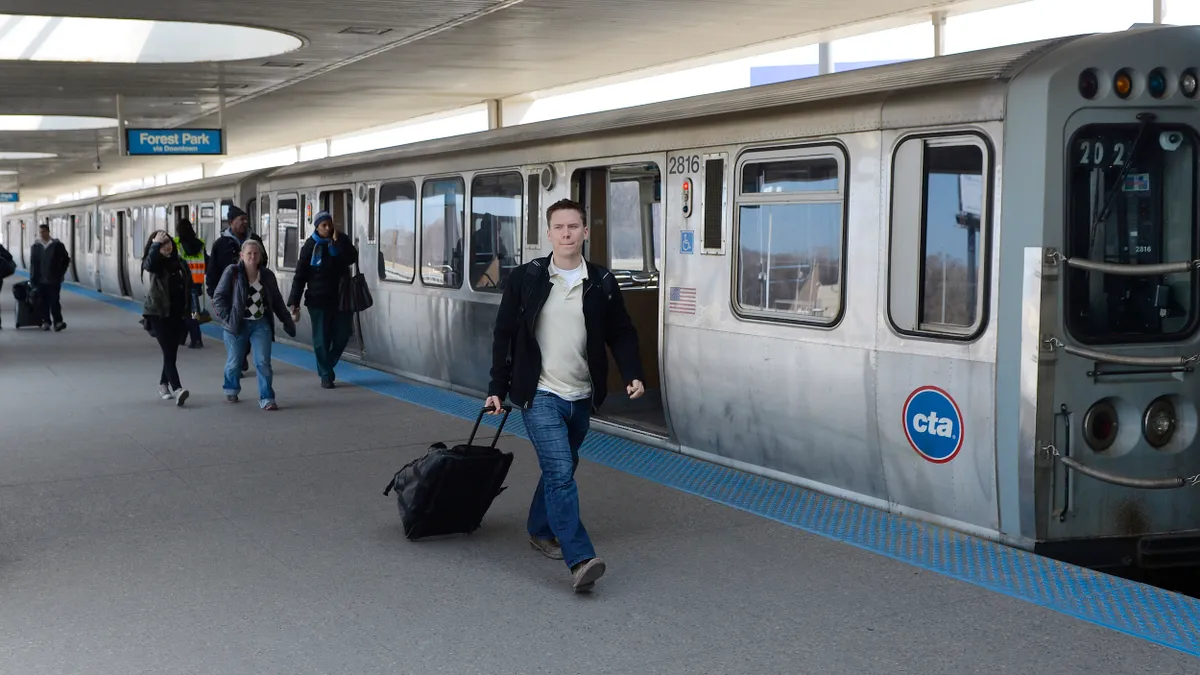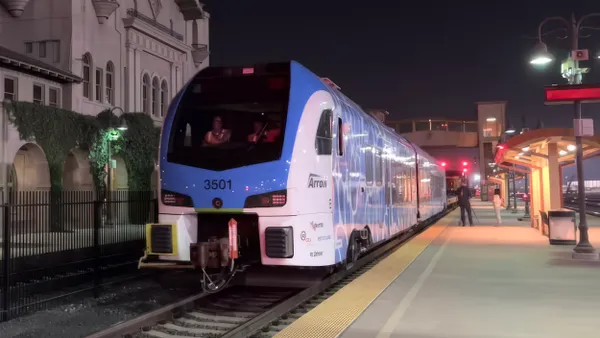Los Angeles voters passed a ballot measure in March that forces the city to carry out its decade-old mobility plan. That plan promised to make thousands of miles of city streets safer for pedestrians, bicyclists and transit riders — and has largely gone unimplemented.
Voters approved Measure HLA during the March 5 election, with 65% in favor. It requires the city to implement street improvements, such as bus and bike lanes, that are laid out in the city’s Mobility Plan 2035 every time a street is repaved — carving out exceptions for quick fixes such as for utilities, potholes or emergency repairs.
Following through on the mobility plan would mean upgrading more than 2,500 miles of city streets — including "pedestrian-enhanced districts,” which would provide safe walking conditions within certain communities. The plan also includes hundreds of miles of new bus lanes and protected bike lane networks, among other measures.
HLA's passage is “a very exciting moment in Los Angeles,” said Michael Schneider, founder of the advocacy group Streets for All, which backed the measure. “If the car capital of the country can say that they want change, they want safer streets, they want a more multimodal city, it can really happen anywhere.”
The Los Angeles City Council approved the mobility plan nearly a decade ago. But backers of HLA argued that the city has so far implemented just 5% of road improvements laid out in the plan.
The city’s firefighters union opposed the recent ballot measure, arguing mobility plan upgrades could worsen traffic congestion and slow emergency response times. City Councilmember Traci Park shared their concern, according to Fox 11 Los Angeles. However, Schneider and HLA backers have pushed back, saying safer streets would reduce the burden on first responders by cutting the number of calls involving pedestrians or cyclists hit by cars. Plus, emergency response vehicles could use new center bus and turn lanes to get to their destination faster, HLA backers say.
Neither Councilmember Park nor leaders at the United Fire Fighters of Los Angeles responded to requests for comment regarding their opposition to the measure.
With LA facing a projected budget deficit of $476 million, some city leaders have voiced cost concerns about Measure HLA. In February, prior to the vote, City Administrative Officer Matthew Szabo released a report estimating that mobility plan implementation would cost the city more than $3.1 billion over 10 years.
Measure HLA does not give Los Angeles any additional funds, but the city “will begin to implement [it] by using available resources and leveraging planned and on-going mobility projects," Szabo said in an email.
Dangerous conditions
Road safety has worsened nationwide since the onset of COVID-19, with recent years bringing a dramatic rise in pedestrian deaths. Los Angeles saw upwards of 330 traffic deaths in 2023 — an 8% increase over the year prior, the Los Angeles Times reported.
The city’s surface-level boulevards and arterial roads are very wide, with as many as six lanes, said Michael Manville, a professor of urban planning at the University of California, Los Angeles. These roads are designed to maximize vehicle speed and throughput but also have intersections and are used by pedestrians and bicyclists, he said.
Six-lane freeways are often relatively safe, since they are not used by bicyclists and pedestrians and don’t have intersections, Manville said. But networks of arterial roads with those same dimensions are a different story. “It's a recipe for a lot of dangerous conflicts between cars and bicyclists, cars and pedestrians and cars and other cars,” said Manville.
Los Angeles is also densely populated, with a large low-income population that relies on walking and biking to get around, making safe streets all the more important, Manville said. Streets for All contends that more than half of all fatal or severe crashes that occurred in Los Angeles in 2022 happened on mobility plan corridors where the plan’s treatments haven't been implemented, despite those roads only making up a quarter of the city’s total street mileage.
But the CAO office told Smart Cities Dive that the mobility plan is not a formal plan with a project list that the city is required to complete. Instead, it is a "planning document,” Szabo said. “It does not include specific scopes for bicycle, pedestrian, or transit network projects.”
The city has incorporated the mobility plan into such improvement projects, the CAO office said. But completing the work requires departments to secure permits and design street improvements, which can be expensive and take time to complete, especially in a large city like Los Angeles, the office said.
Finding the money
Schneider says he’s seen the city take some positive actions in the nearly two months since Measure HLA passed at the ballot box. City leaders moved very quickly to discuss the next steps, he said, even before it’s officially certified into law in May.
According to the CAO office, the city is working on a strategy to fully carry out the mobility plan — which it will eventually submit to the mayor and city council. Actions include reviewing projects already in the pipeline to see if mobility plan work could be incorporated, the office said.
“To be this proactive is a very good sign. It shows good faith,” Schneider said.
However, he objected to the CAO’s $3.1 billion estimate for plan completion, saying the total will not “be a huge amount of money,” and described the estimate as “a political game.”
Schneider contended that the HLA does not mandate many of the expensive projects Szabo included in his projections. Improvements could be tied to the city’s existing paving schedule, Schneider said, making it inexpensive to implement a bike or bus lane, since the city already paints new stripes on the street after repaving.
The CAO's office denied that its estimate for implementing the mobility plan was political, saying its team works as financial advisors for the mayor and city council.
The CAO’s estimate was high because the mobility plan doesn’t provide a scope of work for the improvements, so they incorporated all of the safety components that are needed for projects such as bike lane networks and sidewalk repairs, the office said.
When a different city agency starts to actually design that bike lane, it may determine that all the components may not be necessary — and that the cost is less than estimated. But other variables could also drive up the price tag, the CAO's office said: Residents' ability to sue the city for failing to implement the plan under HLA could be costly, and construction could become more expensive over the next decade-plus.
It’s doubtful that the city will be able to hit all of the targets listed under the mobility plan by 2035, the office said, but it could make good progress by that time.
Manville said Measure HLA was put on the ballot because the city didn't prioritize carrying out its own plan. Manville does not buy the argument that implementing the mobility plan is too expensive, calling the idea “just stupid.” That's just another way of saying the work is not very important, he said.
“You can be concerned that the city needs to raise money to do something,” said Manville. “But simply saying that, ‘Oh, it’s going to put us in the red,’ that logic by itself just suggests that most of what the city does, it shouldn’t do.”
In the end, if the city completes just some of the mobility plan measures, then Measure HLA will make Los Angeles' streets safer, said Manville.


